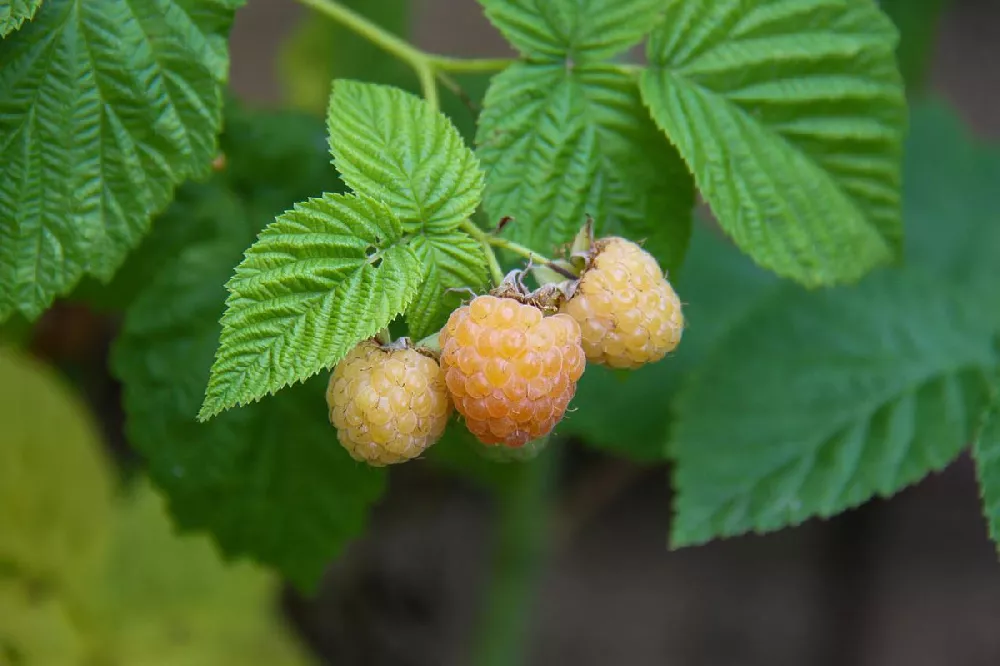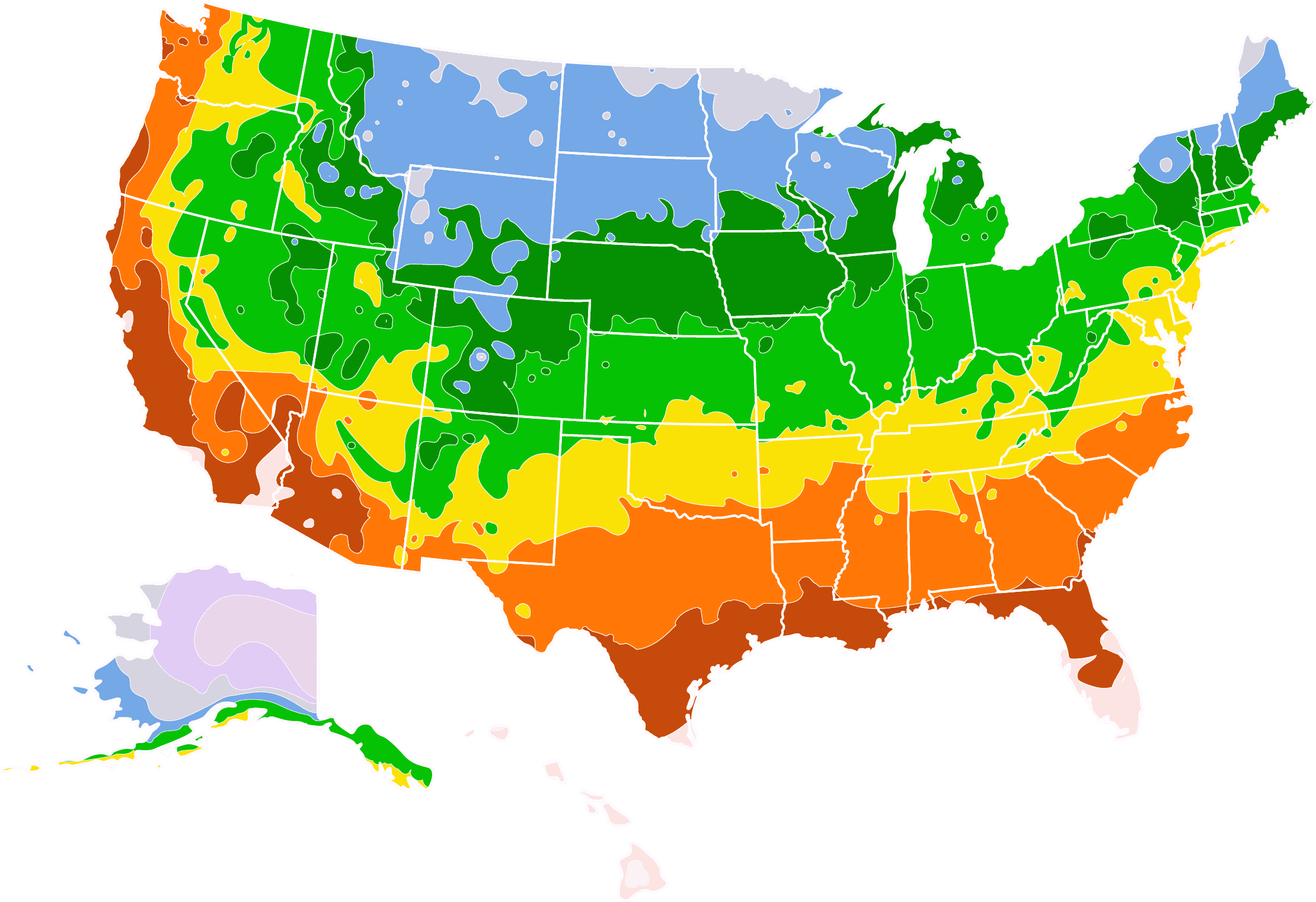- Home >
- Shrubs and Bushes >
- Berry Bushes >
- Golden Raspberry
Golden Raspberry for Sale - Buying & Growing Guide
- Ships in 1-2 days
- 1-Year Warranty Eligible
- Pots or accessories are not included unless specified in the product options.
Shipping Details:
Once your order is shipped, you’ll receive an email with a tracking number and estimated delivery date. Most orders ship immediately, but some items are seasonal and may only ship in spring or fall. These products are noted on the website.
If you like berries, the golden raspberry, Rubus idaeus 'Anne,' should have a place of honor in your garden. This attractive fruiting plant offers not one, but two harvests a year of delicious, sweet, golden berries that are considered by many to be one of the best-tasting raspberries available. Golden raspberry bushes are petite raspberry plants, with canes that only reach 2 to 3 feet tall, so they can be easily grown in small gardens or even in containers. Golden raspberry plants produce a moderate-sized crop in early summer, followed by a heavier crop in early fall. They are self-fertile, but you'll have a bigger harvest if you plant more than one. These prolific plants do best when trellised, and they will provide years of produce if well-cared-for. Here are a few more reasons to plant a golden raspberry in your garden:
- The fruits are high in antioxidants and low in calories, and they can be used in cooking as well as eaten raw.
- These hardy plants can be grown almost anywhere in the continental U.S.
- Golden raspberry plants can be propagated easily by transplanting suckers.
Plant Care
Sunlight

Golden raspberry plants grow best when they are planted in full sun. Site your plant where it will get six hours or more of direct light a day.
Watering
Give your golden raspberry plant about 1 inch of water a week — more during very hot or dry weather.
Fertilizing

Golden raspberry plants benefit from an application of compost as well as a balanced, slow-release fertilizer in spring.
Planting and Care
Planting instructions
Plant golden raspberry bushes in early spring in the northern part of their range, late winter in the warmer regions. Site your bushes where they will get full sun in soil that drains well and has good air circulation. A week before planting, dig some well-rotted compost or manure into the soil where you plan to site your plant. Unpot the bushes and tease out any encircling roots, which can girdle the tree and slowly kill it. Dig a hole that’s the same depth as the root ball and twice as wide. Place the cane in the hole, and, while holding it upright and steady, fill in around it with the compost-amended soil. Plant multiple canes about 3 feet apart, in rows that are 8 feet apart. Water thoroughly. Apply a 2- to 3-inch layer of an organic mulch, such as bark chips, around the root zone to conserve moisture and hinder weed growth.
Watering and nutrients
Newly-planted canes should be watered several times a week, until you start to see robust new growth on them. Once established, give your plants about an inch of water a week, which you should increase during very hot or dry weather. Fertilize with a balanced, slow-release fertilizer designed for berry bushes in the spring.
Pollination
Golden raspberry plants are monoecious, or self-fertile, so you should be able to harvest fruit even if you only have one plant. You will, however, increase the amount of berries you get from each cane if you have more than one plant.
Pruning
Although the roots of golden raspberries are perennial, canes only live two years. In their first year, they are green and are called primocanes. These canes will produce fruit in the fall near the tips. Those tips can be pruned off after harvesting. The next spring, the now-2-year-old canes are called floricanes, and they will have turned brown. They will produce an early-summer crop on the lower part of the canes. After that crop, you can prune these floricanes to the ground. You can also prune out some of the suckers that will arise around the canes each spring, so that the plants are not crowded. Cut out any that are growing sideways or are diseased or damaged, leaving about five or six of the strongest canes at each planting site.
Pests, diseases, and animals
Pests that may be attracted to your golden raspberries include aphids, cane borers, and Japanese beetles. There are numerous natural and chemical methods to handle these insects, including fruit tree sprays and horticultural sprays. Japanese beetles can be picked off by hand if the infestation is minor. Diseases of the raspberry plant include anthracnose and botrytis fruit rot — both are fungal in origin and may be handled with a copper fungicide. Also, keep the area around your canes clear of leaf debris for good air circulation. Animals that may be found on your raspberry plants include a variety of birds, which may eat the berries unless the plants are netted.
Harvesting
Harvest berries when it is dry and cool outside. Berries should be soft and come off the branch easily. If they don’t release immediately, they are not quite ripe. Fresh berries are fragile and should be handled carefully. Do not wash them until ready for use. They will keep in the refrigerator for a few days, and they can be frozen if not needed immediately.
Achieving maximum results
Golden raspberry plants are not difficult to grow and in fact are a great choice for a gardener who is just starting to grow fruit. They do not need the care and spraying that fruit trees such as apples and peaches need, and they are vigorous growers even with minimal care. They do benefit from being planted in loose, fertile soil, and they grow best when supported with a trellis, which can be as simple as two posts at either end of the row with wire strung between them. Probably the most challenging aspect with raspberry plants is pruning them, but even this becomes easy if you just keep them thinned out and remove all second-year canes, which are easily distinguished from green first year canes, after they fruit.
FAQs
Where do golden raspberry plants grow best?
What can I do with golden raspberries?
Golden raspberries are sweet and tasty, and they can be enjoyed on their own as a snack or used as part of a fruit salad. They also excel in cooked recipes, and they are frequently used to make jams, jellies, and fruit compotes. Any recipe that calls for berries, in general, is appropriate for the use of golden raspberries.
Do I need to spray my golden raspberry plants?
That depends on what sort of disease and pest pressure is common in your area. Spraying with a horticultural oil, for example, can kill pests, such as aphids and mites, while also protecting against black spot and powdery mildew. Ask your local cooperative extension agent or a knowledgeable gardener if there are any pests or diseases that are often seen in your region and how they should be handled.
Compare Similar Products
Customer Reviews
 Arrived quickly
Arrived quicklyOverall experience hasn't been bad. Luckily it was packaged well because it's obvious that it was not treated with care during transport. I was Impressed how tell it was packaged which kept it from being severely damaged. Now it's just a waiting game, looking forward to see how things work out.
 Purchased Raspberry Bush
Purchased Raspberry BushSo far it's still living. It arrived a little later than expected but that was ok. The plant arrived in great condition.
You can't add more Product Name - Product size to the cart.
OK








